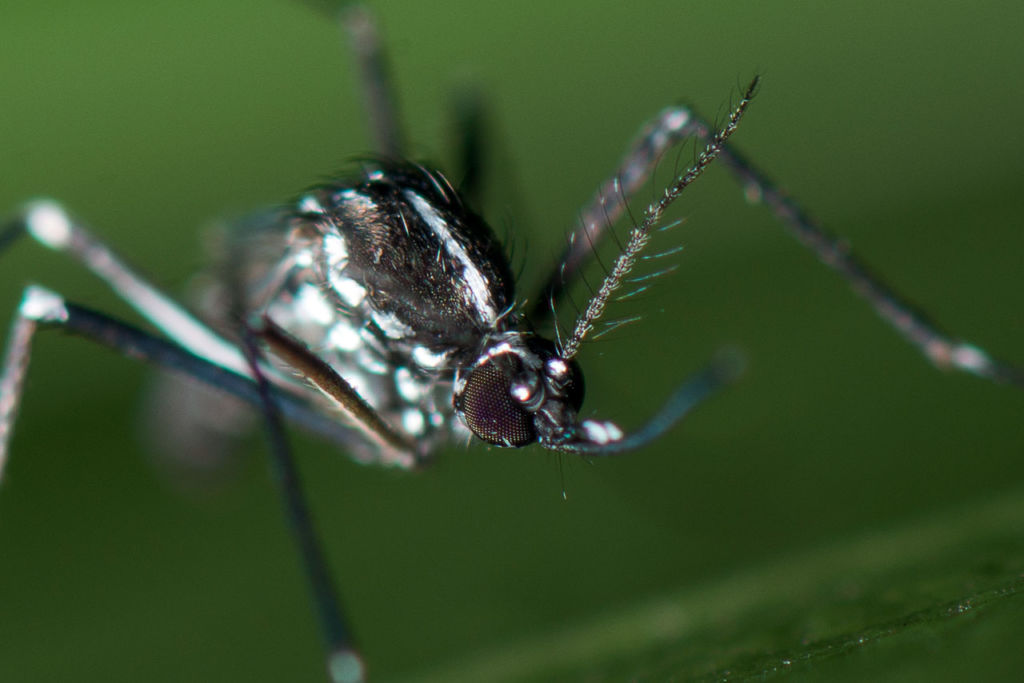[LUM#11] A sterile mosquito for a quiet island
"Fight evil with the male". This is the strategy chosen by researchers at the Mivegec laboratory to reduce the risk of epidemics of mosquito-borne diseases on Réunion Island. Their method: the sterile insect technique, based on the mass rearing of male tiger mosquitoes, sterilized and then released into the wild.

266 000. This is the number of people living on Reunion Island affected by the chikungunya epidemic that hit the island in 2005-2006. How did the virus responsible for this disease infect 30% of Réunion's population? " Chikungunya is transmitted by the tiger mosquito, Aedes albopictus, also a vector of the dengue virus, which has affected more than 50,000 people on the island since the beginning of last year," explains Frédéric Simard of the Maladies Infectieuses et Vecteurs : Ecologie, Génétique, Evolution et Contrôle laboratory.
In the absence of a vaccine, the only way to limit the transmission of these diseases is to reduce contact with the mosquito vectors. While mosquito control has long taken the form of massive insecticide spraying, this practice is now reaching its limits: not only are the products used not without consequences for the environment and populations, who now take a dim view of them, but "mosquitoes are becoming resistant to insecticides, which considerably reduces their effectiveness", explains Frédéric Simard.
Insecticide resistance
How can we curb the proliferation of Aedes albopictus while limiting the use of insecticides? Researchers at the Mivegec laboratory are banking on a promising stratagem: the sterile insect technique. This involves sterilizing laboratory-bred male mosquitoes with X-rays, then releasing them en masse into the wild. " The females fertilized by these males will lay eggs that will never hatch," explains the researcher.
This method is all the more effective as female mosquitoes mate only once in their lives, and then store the sperm in their spermatheca to fertilize their eggs. "If a female mosquito mates with a sterile male, she fills her spermatheca with non-functional sperm and will never have offspring. Given that a single female can lay over 1,000 eggs in her lifetime, that's just as many fewer mosquitoes born.
The sterile insect technique has already proved its worth, particularly in the agricultural world, where it has been used for some fifty years to combat certain insect pests. But to apply it to the tiger mosquito, researchers had to overcome some specific challenges.
Mass rearing
First step: mastering the techniques of mass-rearing Aedes albopictus in the laboratory, then sexing the individuals, i.e. separating males and females. " This is a crucial stage, as only the males will be released into the wild," explains Frédéric Simard. To separate the males from the females, the researchers pass the mosquito nymphs through a sieve, thus eliminating the females with larger nymphs.
The second decisive step is the sterilization of the male nymphs using X-rays. " At the end of this stage, we had to check that the irradiation did not affect either the health of the males or their ability to mate", explains the researcher.
Generating support
Last step: testing the method in the field! "In June 2019 we carried out an initial release of 3,000 sterile males," explains Frédéric Simard, who points out that these releases cause no nuisance to residents, since only the females bite in order to draw blood to feed their eggs. "We've also done a great deal of work to educate and raise awareness among local populations and institutions, whose involvement is absolutely essential in the development of this ecological technique for combating the tiger mosquito. To make it sustainable, it must not only be effective and clean, it must also be socially acceptable, economically viable and implemented within a legal framework. This is a huge undertaking for truly transdisciplinary research," explains Frédéric Simard.
This dialogue is taking place in a favorable context, with more than 2 out of 3 Réunion Islanders spontaneously declaring themselves in favor of the initiative. In view of the success of these initial phases, the researchers have carried out a second release in September 2019 and are planning more massive releases in 2020. "Ongoing field studies will enable us to know where, when and how often to carry out releases to ensure maximum impact on the Aedes albopictus population. This will significantly reduce the risk of new chikungunya or dengue epidemics. We're going to fight evil... with the male".
UM podcasts are now available on your favorite platforms (Spotify, Deezer, Apple podcasts, Amazon Music...).